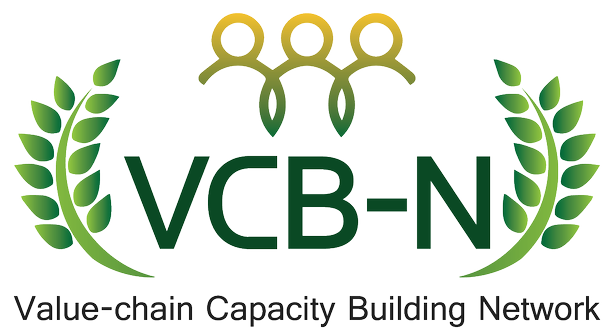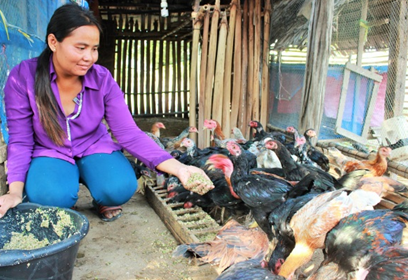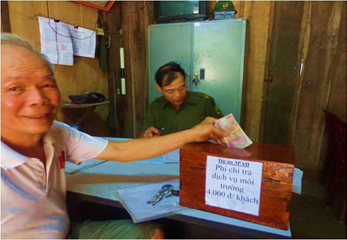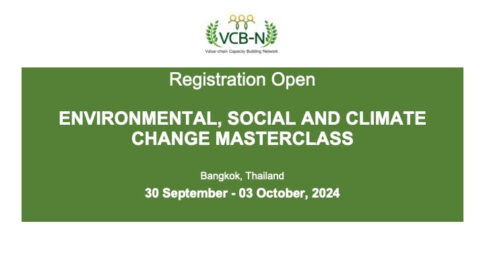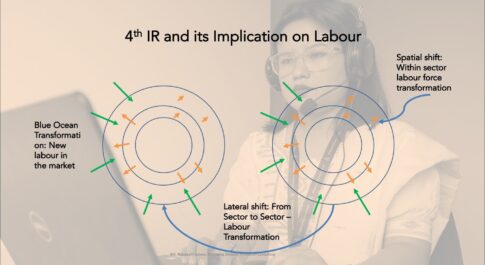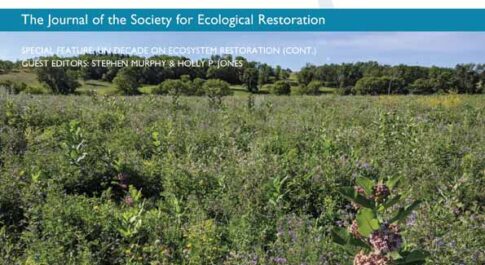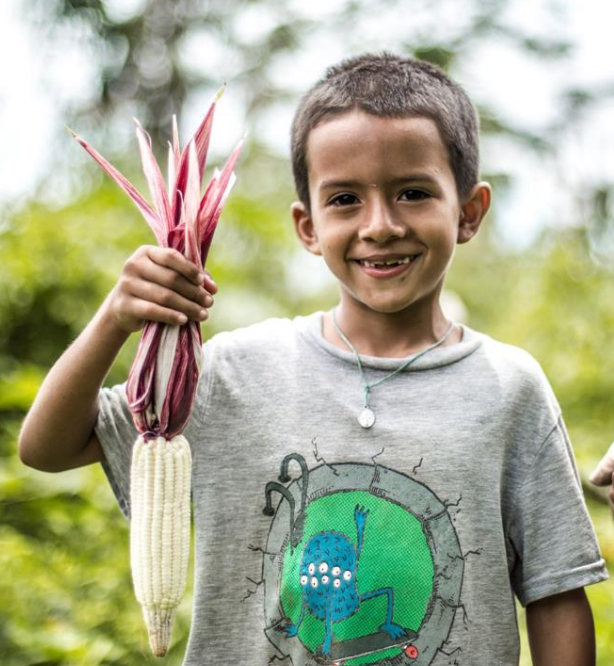
Good practice
Biogas: an integrated farming solution
The following good practice is conducted by Dr Sar Chetra, Director of the Project Building Adaptive Capacity through the Scaling-up of Renewable Energy Technologies in Rural Cambodia (S-RET) / IFAD-MAFF. The case study was selected and presented in Mekong Knowledge and Learning Fair (IFAD) by representative from Cambodia.
(For presentation in the event, please click here)

Background
The National Biodigester Programme (NBP) was established in 2006 to build and maintain household biodigesters throughout the Kingdom of Cambodia. This is aligned with Cambodia’s Climate Change Strategic Plan (2014 – 2023) and Climate Change Priorities Action Plan For Agriculture, Forestry, and Fisheries Sector (2016-2020). By end of July 2016, NBP built 25,115 biodigesters with 130,500 direct beneficiaries. NBP provided each farmer US$150 incentive per biodigester to reduce the financial burden of farmers to purchase biodigester technology. In cooperation and coordination with three microfinance institutions (MFIs), namely PRASAC, Amret, HKL a maximum loan of $1,000 with monthly interest of 1.2% per month was made available to each farmer who decided to build a biodigester. The IFAD supported project S-RET is supporting the installation of an additional 3,000 biodigesters.
Innovations / Good Practices
Bio-digesters convert manure and other forms of organic waste into biogas, a methane-rich fuel that can be piped to homes for cooking and lighting needs. Programs to finance and implement household-scale biodigesters within rural communities in developing countries have been promoted by aid agencies and non-governmental organizations as a means of advancing the renewable energy agenda while also creating “a sustainable and indigenous energy source”. Converting livestock manure into biogas could make a major domestic renewable fuel source available to more than a billion people, giving them access to affordable, reliable, and sustainable energy sources in line with SDG 7. The productive utilization of farm (and sometimes human) waste intensifies agricultural efficiency while also improving sanitation and waste management
Impact
Around 25 percent of the approximately two million rural households could benefit from biogas over the next few decades, according to statistics from the NBP. To date, the following are the benefits:
Livelihood and health improvement:
- 25,115 rural kitchens are smoke-free and provide meals to a cumulative of 130,500 rural Cambodians;
- 18,500 people have switched from open defecation by installing a total of 3,500 digester connected toilets;
- Significant reduction of household air pollution. Biogas stoves are clean with little or no CO2 Kitchens are 83% cleaner compared to the baseline and exposure levels are 29% down;
- Estimated 18 averted premature deaths and 882 adverted disability-adjusted life years in the period 2006 – 2014;
- An average saving of US$91 per year on fuelwood and chemical fertilizers per household;
- Time saving of 80 minutes per day;
- Expected benefits also include decreased exposure to Household Air Pollution (HAP) due to the substitution of solid biomass combustion for cleaner-burning biogas.
Employment creation:
- A cumulative of 2,300 man-years in construction in the period 2006 – 2015. Sixty two private enterprises are established by the Programme and are actively involved in construction, marketing and promotion and after sales services;
- 604 masons trained in construction and 162 supervisors in quality control.
Environmental benefits:
- 365,350 tCO2 reduced between Mar 2006 and December 2015;
- Over 150,000 ton of wood saved, equivalent to roughly 10 km2 of intact forest or 30 km2 of degraded forest;
- Annually 228,580 ton of animal manure from an estimated total of 157,928 cows, buffalos and pigs is safely treated in a biodigester;
- Over 20,000 farms are using bio-slurry as a safe and organic fertilizer.
Facilitating Factors / Challenges
Facilitating factors include supporting innovative financing packages and loan repayment schemes for promotion of the biodigesters with a high consumer preference. Other factors include the enhancement of the NBP protocols for testing and demonstrating small and medium-scale biodigesters for powering small-scale machinery such as water pumps, chaff cutters and milking machines. Major challenges include knowledge gaps and network establishment for timely after-sales services. Aside from cost, substantial amount of animal manure is required to kick-start biodigesters. About 1,500 kilograms are needed for the smallest four-cubic-metre tank. After that, they need about 20 kilograms daily, which needs about two to three cows to produce the required volume of manure.
Lessons Learned
- About 20 percent of the farmers have realized the benefits of this organic fertilizer and awareness programmes are crucial to enhance the uptake of bio slurry.
- The number of trained BCCs was increased to guarantee after-sales services and proper operation and maintenance (O&M). In addition, door-to-door activity has a direct sale action in finding more clients
- NBPs Private Sector Development (PSD) Unit has played a key role in supporting the training and coaching of BCAs who station based in Svay Rieng, Prey Veng, Kandal, Takeo and Kampot, which is predominantly done by NBPs 3 Outreach Trainers. As part of the coaching and on-the-job learning process, BCA received 60 coaching visits from NBPs Outreach Trainers.
Recommendations
Cost-effective technologies such as biogas systems can stem methane emissions from livestock manure by recovering the gas and using it as an energy source. The organic material is inserted into a sealed digester, and in the absence of oxygen, anaerobic bacteria consume the organic matter to multiply and produce biogas which can be piped directly to a cooking stove. By producing biogas with cow dung, another benefit from the biodigester is the bio-slurry obtained producing an effluent proven to have higher nutrient concentrations than chemical fertilizers and organic compost. This effluent has the potential to replace current chemical fertilizers and improve soil fertility and crop productivity, thereby increasing income levels.
You may want to read
